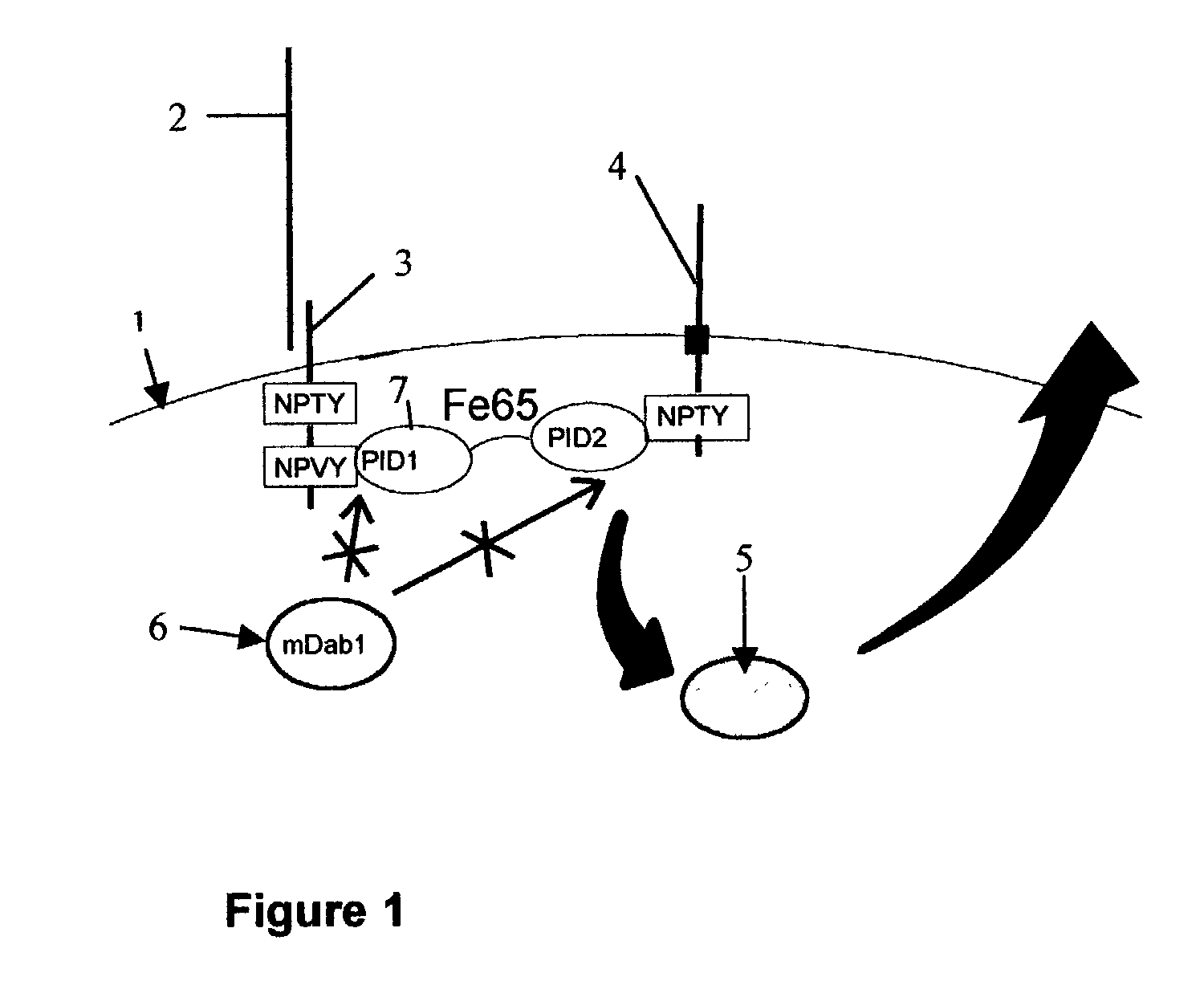Influence of LRP cytoplasmic domain on Abeta production
- Summary
- Abstract
- Description
- Claims
- Application Information
AI Technical Summary
Benefits of technology
Problems solved by technology
Method used
Image
Examples
example 2
[0076] Antibodies
[0077] The polyclonal antiserum (1704) was generated by immunizing rabbits with a synthetic peptide corresponding to the last 15 amino acids of the cytoplasmic domain of human LRP coupled to keyhole limpet hemocyanin. Monoclonal antibodies 1G7, 5A3 and 26D6, which react with the ectodomain of APP, have been described previously (Koo et al., 1996; Kang et al. 2000). Polyclonal antibody CT15, which reacts with the cytoplasmic domain of APP and the polyclonal antiserum 863, which was raised against the mid-region of APP, has been described previously (Sisodia et al., 1993; Marquez-Sterling et al., 1997).
example 3
[0078] Immunoprecipitation and Immunoblotting.
[0079] For detection of intracellular proteins, cell extracts were prepared using an NP40 lysis buffer. To detect APPs and secreted A.beta., media conditioned by the respective cell lines for 24 h or 72 h were collected for analyses. For APPs detection, conditioned media were immunoprecipitated using the monoclonal APP ectodomain antibodies 1G7 and 5A3. Extracts and immunoprecipitates were fractionated by SDS-PAGE in 4-12% tris-glycine gels. In all cases gel loading was normalized to total protein content in the cell extract or the corresponding cell extracts when medium samples were used. Western blotting was carried out with the indicated antibodies and detected by enhanced chemiluminescence (Pierce). Quantitation of the chemiluminescence signal was carried out with a CCD camera imaging system (GeneGnome, Syngene, Frederick, Md.).
example 4
[0080] Ab ELISA Measurements.
[0081] Media from LRP- / -, LRP.+-. LRP- / -CT fibroblasts was collected after an incubation period of 72 hours in serum free IS-CHO medium. Debris was removed by centrifugation (13,000 rpm for 20 min) and the supernatants were subjected to A.beta.40 quantification using a standard sandwich ELISA described previously (Kang et al., 2000).
PUM
| Property | Measurement | Unit |
|---|---|---|
| Size | aaaaa | aaaaa |
| Time | aaaaa | aaaaa |
| Fluorescence | aaaaa | aaaaa |
Abstract
Description
Claims
Application Information
 Login to View More
Login to View More - R&D
- Intellectual Property
- Life Sciences
- Materials
- Tech Scout
- Unparalleled Data Quality
- Higher Quality Content
- 60% Fewer Hallucinations
Browse by: Latest US Patents, China's latest patents, Technical Efficacy Thesaurus, Application Domain, Technology Topic, Popular Technical Reports.
© 2025 PatSnap. All rights reserved.Legal|Privacy policy|Modern Slavery Act Transparency Statement|Sitemap|About US| Contact US: help@patsnap.com



